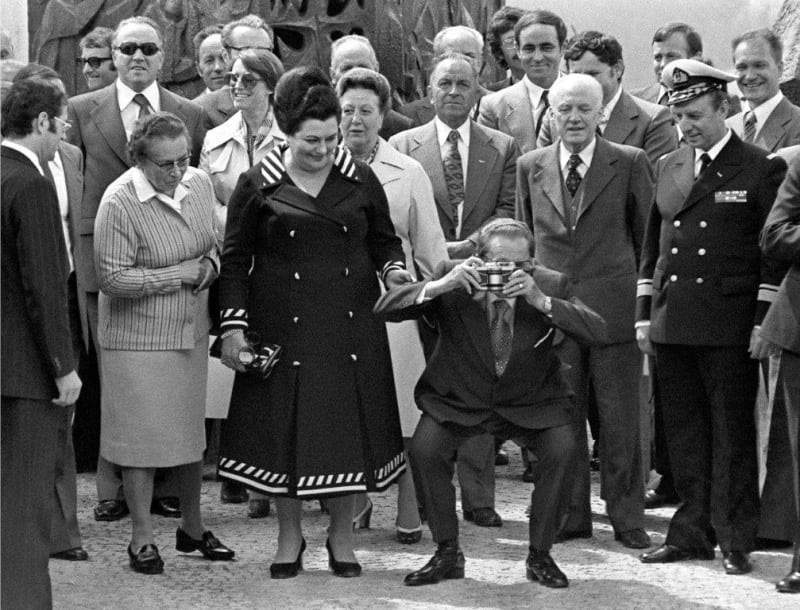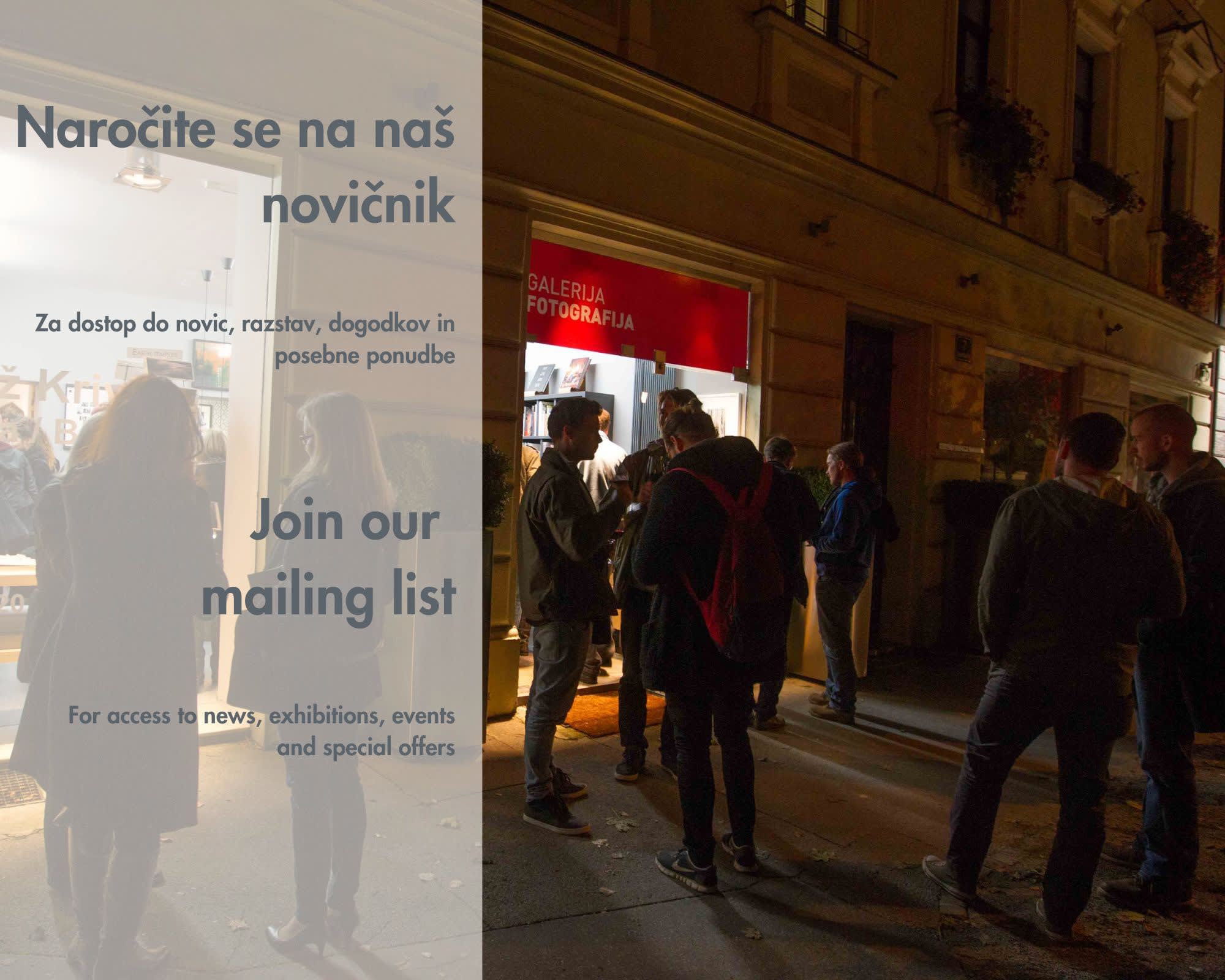Joco Žnidaršič: Tito and the Camera
On the 4th of May 1980, the charismatic leader of SFRY, Josip Broz Tito, died in Ljubljana’s Medical Centre. The event was widely reported on by domestic journalistic mediums, but was also adorning covers internationally, from Der Spiegel to New York Times. Among the iconic photographs of Tito which were published alongside the articles, numerous were the work of Joco Žnidaršič, a master of photography and, quite coincidentally, Tito’s designated photographer on his visits to Slovenia.
The career path of Joco Žnidaršič is just as interesting as the man himself. A former medical student, he began his photojournalistic path at the newspaper Tribuna, and continued at Tovariš and Delo. He was the first photographer who received the Prešeren Foundation award in 1977, including for his work as editor of photography at Delo. The same year, he became the first Slovene photographer to win the World Press Photo award for his dramatic sequence of photographs documenting the rescue of a horse on Triglav. His photographs are known to depict people through a profoundly sincere and humanizing lens. His camera was focused equally on gripping documentations of the Iran-Iraq war, the Corsica plane crash, the Slovenian War of Independence, as well as on portraits of the era’s leading politicians. He was assigned the fascinating position of Tito’s official photographer during his time at the daily newspaper Delo in the 1970s. By coincidence, his co-worker fell ill on the day of photographing Tito’s arrival in Predoslje, and Žnidaršič’s photographs of the event impressed the editorial office (and Tito) so much, he began taking shots of him everywhere.[1] He followed him all over the world, including on his famous visit to the Great Wall of China, Non-Aligned countries such as Sri Lanka, and elsewhere.[2]
Since the very conception of the medium of photography, leaders of great countries were usually accompanied by numerous photographers. It served the promotion of their governments ever since the 19th century, when queen Victoria issued a photographic album of carte-de-visite portraits which hit record sales in England.[3] Because of its specific nature of depicting “the objective”, photography was a powerful medium for revealing the “truth”. The latter was clearly easily manipulated with the right modes of orchestration but was still perceived as the most truthful in the eyes of the public. As was the case for all distinguished leaders of the time, Tito was well aware of photography’s power. These types of images helped establish a cult of personality, which spread quickly amongst the people of Yugoslavia. It had a clear function of promoting ideology through images and gaining support of the people, who were able to identify with numerous representations of Tito – Tito with pets, children, observing exhibitions, nature, and even while relaxing with a glass of whiskey or a cigar. The series of images showing Tito photographing, however, is much less known.
The fascinating aspect of Žnidaršič’s photographs is the fact that he captured moments other photographers haven’t noticed, or perhaps haven’t considered important. He never made official, rigid images of politicians, but preferred to present them as he did ordinary people, for example in his moving series of the impoverished people of Kozjansko. Thus, a number of photographs depicting Tito in unconventional scenarios was created. Among them, a series of presidential portraits focused on his relationship with the camera. Tito loved to take photos, which is visible for example in the photograph from Dražgoše, where he is handing one of his polaroids to General Vidovič on the spot. In an interview, Žnidaršič told the newspaper Delo that Tito once commented on his camera, saying he owned a better one. He replied that this may be true, but he was a better photographer. A delicate statement was thankfully met with laughter from Tito’s wife Jovanka.[4]
Beside its advertising function, Tito was also aware of photography’s artistic potential. Republic exhibitions of photography were frequent and important events, which by themselves spoke volumes of the president’s love of photography. Now for the first time, he is presented as a photographer himself. These photographs were not part of a narrative of propaganda, but instead show Yugoslavia’s president engaged in a perhaps slightly unusual hobby. As Bogdan Pogačnik wrote about Žnidaršič’s photographs: ''Even though the collection shows – whether Tito is by himself or in the company of others – only one person, this presentation is never imbued with regime ideology or stylistically pathetic, but always gentle and democratic, simple and straightforward''.[5] In certain photographs, it seems as if Žnidaršič is photographing Tito and vice versa, while both are exuding joy behind the camera – one with a smile and camera in hand as subject of the image, the other as its passionate documentarist. Through the double lens of photographer and his subject, Joco Žnidaršič’s photographs remind us of a fascinating man, an intriguing time in history and a universal love of photography.
Hana Čeferin
[1] Veso STOJANOV, Telefoto je bil včasih tudi norišnica, Delo, 25. 2. 2019 (available at: https://www.delo.si/novice/slovenija/tele-je-bil-vcasih-tudi-norisnica-150764.html).
[2] Tadej GOLOB, Joco Žnidaršič: "Fotografija je danes tudi galerijsko blago, zlasti v Ameriki!", Metropolitan, 24. 5. 2007 (available at: https://www.metropolitan.si/scena/joco-znidarsic/).
[3] More in: Helmut GERNSHEIM – Alison GERNSHEIM, The History of Photography, London 1969.
[4] Veso STOJANOV, Telefoto je bil včasih tudi norišnica, Delo, 25. 2. 2019 (available at: https://www.delo.si/novice/slovenija/tele-je-bil-vcasih-tudi-norisnica-150764.html).
[5] Bogdan POGAČNIK, Uvod, in: Tito. Fotografije z obiskov predsednika Josipa Broza Tita v Sloveniji. 1974–1977, Ljubljana 1977.






